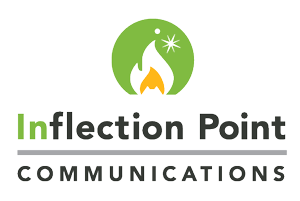How do you know when it’s time to rebrand your business? And honestly, what does that even mean? A lot has changed in the last year; and it’s likely the same has happened in your business. In this article, we’ll discuss the ins and outs you should consider as you determine what a rebrand is, and whether it’s right for you and your business now.
So, what is a rebrand? A rebrand is a change in your company’s image. Now there are two things you need to understand about this simple definition.
- That “change” can be prompted from within your company or by others outside of your company [i.e., the In(side) and the Out(side)].
- Your company’s “image” isn’t just the way it visually presents itself to the world; no, it’s really the reputation it holds. And again, that can work both ways too.
Now a rebrand can be a change to your messaging alone. However, it’s likely that messaging is about (re)positioning yourself in some way, and it’s important to determine if a visual change is also necessary to effectively share and communicate that change.
But I don’t want to leave you with more questions than answers on this subject; so, let’s explore the in and out factors you may be experiencing and/or encounter down the road that may lead you to rebrand:
IN
- A change in your products/services and/or your target customers/clients.
Your offerings are naturally going to evolve and change to reflect the experience(s) of your business and its customers. However, this change doesn’t always constitute a full rebrand – logo and all; yet if you find that it’s a significant ‘pivot,’ deepening and/or expansion of your offerings that has also affected your view, values and/or plans, it’s worth talking with a brand strategist to determine how to best convey those changes.
- A desire to elevate your brand to reflect your view of it, as well as to better attract more qualified leads to your business.
Growth in the first five years of a business is rapid. Now, when I say growth, I’m not just speaking to your potential revenue growth year-over-year; but even more importantly, the reputation you’ve likely started a good foundation for, during that time and among your target audiences. But do they see you for the depth of your brand and the true value you and your company have to offer?
So much of your dedication to continuing to develop your expertise, credentials and/or quality of product/service goes on behind-the-scenes, unnoticed or possibly just under appreciated.
If you’re investing in growing the value of your business year-over-year, then it’s safe to say you should also invest in effectively communicating that growth through your brand, at least every few years whether it is just verbally or also visually.
- You’re just not ‘feeling it’ anymore.
If you share your elevator speech at a networking event or look at your logo and don’t feel a rush of excitement and energy, then it’s time to determine why.
These days, you can get a logo or messaging online for a nominal fee; but does that work reflect the authenticity of your brand? Not likely; and maybe these days you’re feeling like you look or sound like everyone else.
You see the reason you may not be ‘feeling it’ is because it’s not YOU! Most professionals approach branding from the outside. They’ll ask you “what do you want to present?” and they’ll share best practices of what’s ‘trending’ now; but all of this is manufactured. They start at the surface and look outward. But an Authentic Brand can only come from the heart of your business. It reflects the unique values, beliefs, passions, purpose you feel on the inside, as well as who’s the right fit to receive all of it. The key to ‘feeling’ your brand is authenticity and alignment!
OUT
- The market has shifted and you MUST to remain relevant and/or resonate with today.
Because your business lives in an environment, it will always be susceptible to that environment; and thus, must be responsive to it. 2020 was a year that never made this point clearer. Whether it was the social, cultural or political shifts simultaneously taking place, many notable brands – including Aunt Jemima changing its name to Pearl Milling Company – have since rebranded to remain in-tune with the evolving environment.
It’s easy for us to assume smaller companies fly under the radar of all of this; but it simply is not true. We’re all in a position to create the impact we wish to see in the world through our businesses and their brands. Be sure your mindful of the shifts in your environment and responsive whether in your PR/marketing strategy and/or verbal and visual brand.
- Your look is outdated.
This is a common reason many choose (or should choose) to rebrand. But it’s important to note a couple points here:
- It may not be necessary to rebrand. Whether your colors, design and/or typography seem ‘old school,’ it may be as simple as a brand refresh to keep your company with the times. A brand refresh typically updates the look/feel of your visual brand with minor adjustments to your colors, font and possibly design too. By comparison, rebranding is typically a full transformation to the look, feel and voice of your brand to affect the reputation and value of it.
- Don’t be so quick to respond to the ‘trends.’ Consistency is a big part of building your brand (reputation, loyalty and equity included). So, it’s best to stick with it so long as it’s serving you and your base of customers/clients and the environment they both live in. Don’t be swayed by passing trends that are likely to turn on a dime unless you want to invest in doing the same with your brand! Consider how you may instead build an evergreen brand.
Staying in-touch with your customers/clients and the circumstances around you aren’t just a measure to stay up to date in the look of your brand; but most importantly, to continue delivering the value they need and want today. And should that significantly change your products or services, revisit the 1st bullet point under the “IN” section above!
- Your company is merging with another.
We’re not talking about partnerships here; though you will have to navigate the times your brand will live next to a partners’ for events, collaborations and more. A rebrand is not necessary for these situations; but it is good to have a designer’s eye on any promotional materials when your brand is in combination with another.
Now should your company merge, acquire or be acquired by another, it’s essential to figure out how your two brands will come together. In this case, it’s not just the visuals that will change but also the alignment of your values. But hopefully that was a part of the decision to merge to begin with, right?
An important thing to note, should you decide that a rebrand is right for you and your business now, is that change is easier for some than others. Perhaps you’re ready for the change but your team isn’t. People like comfort; but comfort is not always good. Rebranding your business may be the essential step to level up and present your company in the best way possible. The process can be intensive; but with the guidance of a brand strategist and the clarity of your authenticity and WHY, you’ll gain the direction and momentum to make it a rewarding experience and effect!
Interested in learning more about how your business can expand through branding with “The 6 Cs to Ignite Your Brand?”
Contact us at Connect@InflectionPointComms.com today to access the training video!





